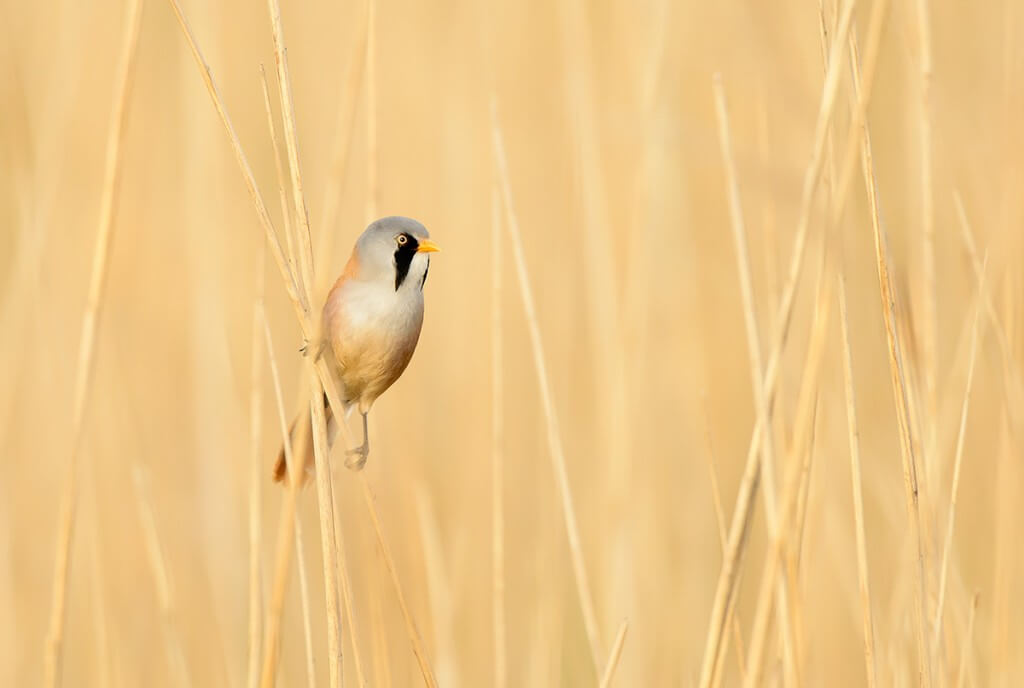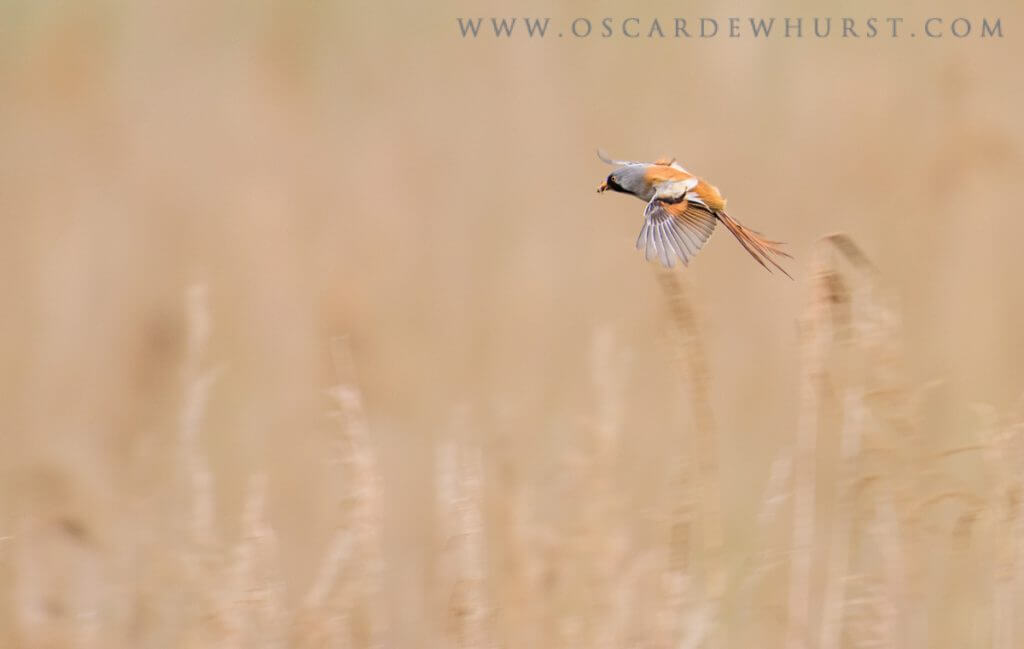
There are (or were in 2014) more Bearded Tits in the UK than there have been since records began – more than 770 pairs. That’s quite a success story and a lot of these birds nest on nature reserves.
Yesterday I strolled down to my local patch of Stanwick Lakes on a dull grey day. The grey was dropping out of the sky, evaporating up from the water, oozing out of the trees and coating the drizzle in the air. It was so grey that without a watch it would have been hard to know whether it was dawn or dusk – but it was actually much closer to midday.
There were birds around, but the Cormorants looked very black and the Black-headed Gulls looked very white whereas everything else looked grey. I’m not sure how the Water Rails looked because I didn’t see any but they were certainly around because they were squealing in the reeds and occasionally making that noise which had completely passed me by, until about ten years ago, which sounds a bit like a Coot. And the Cetti’s Warblers weren’t visible either, but occasionally one would burst (there isn’t really another word for it) into song.
There were Tufted Ducks and Coots on the water and a few Lapwing flew over. All the visible birds were black, or white, or black and white, but the day was grey.
I was after something that was far from grey – a male Bearded Tit – which has been seen by others on my local patch for a couple of weeks now. I’ve come down here once to look and listen for it, and for roosting Bittern, but drew a double blank.
It took about half an hour before I heard the characteristic ‘ping!’ call of the Bearded Tit – twice. That was encouraging on this grey day and gave a boost to my hopes but I saw nothing of it for over 15 minutes. Now I was beginning to wonder whether I really had heard a Bearded Tit – maybe it was a funny Coot call, or a funny Water Rail call, or just wishful thinking. But no, it then appeared calling loudly, perching on the reeds, hopping around and looking like the smart bird that it is, even on a grey day like this. My first Stanwick Bearded Tit; indeed my first Northants Bearded Tit. And a bird to brighten up a grey day.
Bearded Tits really must be doing well if they turn up in my adopted county and my local patch. And we have very regular wintering Bitterns, and Marsh Harriers come through on passage every year. It’s just possible that they might all be breeding before I snuff it. And who’d have thought that back in the 1970s, or 1990s even. Many of our conservation successes are species that have been protected and nurtured on nature reserves and have then spread out into the wider countryside.
I wonder whether Bearded Tit , Marsh Harrier and Bittern will breed in the Nene Valley in due course – I don’t really see any reason why not but the major reason would probably be the one that Ian Parsons wrote about yesterday – too much disturbance from people. Not deliberate disturbance but simply weight of numbers of people around the place, some of them with dogs and some of them with kids too!
But then the people who reach the parts of Stanwick Lakes that other people do not reach are we birders. We walk further from the car parks than the well-groomed lady with the well-groomed (white) dog, and although we all stick to the rights of way we go further into the squidgy muddy slippery bits than do the joggers with their headphones on who have tuned out of Bearded Tit calls when I am trying to tune in. And we get there earlier than the others (apart from one bloke and his dog who clearly cannot sleep, neither of them) and so we start the disturbance off in the morning before others can have a go.
If I were managing the site for birds alone then I’d certainly ban people entirely (including myself) and I’m sure there would be more wildlife as a result but this site is a precious resource for people and it isn’t primarily a nature reserve. So we are going to have to see how we all rub along with each other over the years. And I reckon those reedbed species will get here and nest here eventually. After all, there’s one male Bearded Tit here already – all we need is for him to stay and a female to turn up after Christmas and then we are made! It’s bound to happen, maybe, possibly, eventually.

Mark,
I think that the bearded tit population numbers have been and still are under estimated. I seem to recall a figure of 400 being counted on Tayside a few years back. An Autumn count at RSPB Ham Wall found 140 birds a few years ago and although the census was diligent some ( quite a lot?) must have been missed. Yet Bearded Tits are only occasionally seen there and then in small numbers.
I helped with a breeding census some years ago – didn’t see or hear a single bearded tit from my watch point. They don’t have conventional breeding territories which doesn’t aid surveying.
So it’s a good news story but I reckon that the population is well over 770 pairs.
Trevor – quite likely, I’d say. I guess that the methods used mean that the increase is real but that the estimate of the population is a bit ropy.
Interesting thoughts Mark. How would you explain the apparent success of bearded tits, bitterns, marsh harriers etc in places like Minsmere & Titchwell where there are probably many thousands more people, including families, wandering around than there are at Stanwick? Is it that birds do get used to large numbers of people after a while?
David – Hi! Although there are lots of people, there are large areas of suitable habitat which are almost completely undisturbed. If you put a few more paths through the reedbeds there’d be less wildlife; if you closed the existing ones for a breeding season I wager there’d be more.